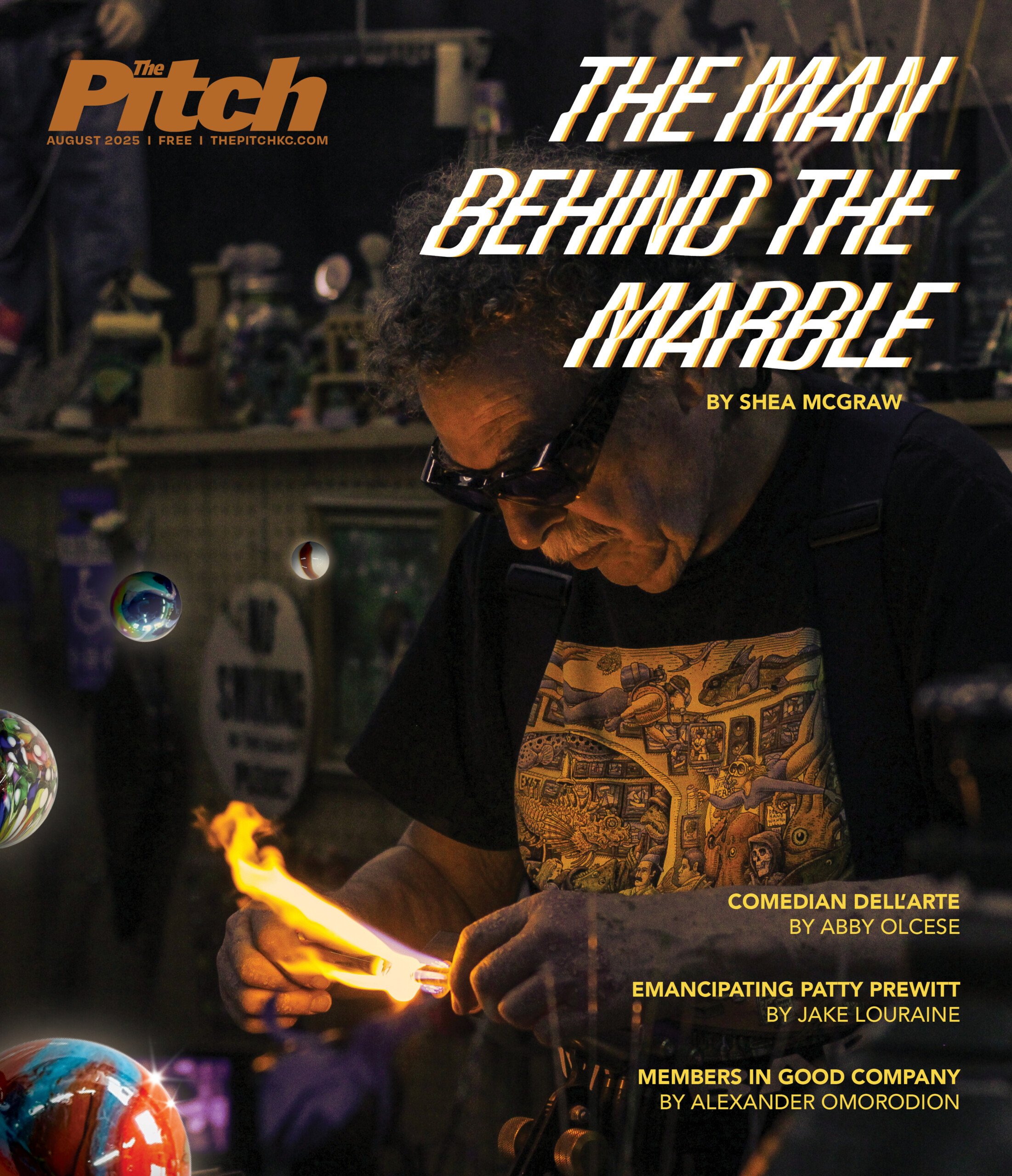Hearse Nurse

The summer sky darkened slowly outside Truman Memorial Veterans Hospital in Columbia, Missouri, as Elzie Havrum’s wife, son, daughter-in-law and granddaughter sat at his bedside. The frail 66-year-old World War II veteran had checked in that day because his emphysema was acting up, and he complained of a “sour stomach” and swollen legs.
His doctor had monitored him carefully and ordered blood tests. Havrum seemed to be improving. His family expected that he would leave the hospital in a day or two to go back to the brick home he’d built years earlier in Fulton. Family and friends missed him when he wasn’t around. He was the auctioneer on Friday evenings at the family’s popular sale barn behind the Havrum home, and his calling style was well known in the area.
After decades of marriage, Helen Havrum was still very much in love with the man she had met outside a Fulton, Missouri, movie theater when she was sixteen. It was a wartime romance. The couple married after less than a year of courtship, in August 1943, and lived together for just a year in a small apartment before Havrum shipped out to the Philippines in 1944.
A shrapnel injury to his face and a bad case of malaria soon brought Havrum — with a Purple Heart on his chest — back to his young wife. He recovered from the disease, but health problems lingered from his injuries.
Over the next few years, Helen Havrum gave birth to two sons and a daughter. Elzie Havrum drove trucks, then got a job at the local brick factory, where he would work for more than forty years. Havrum “loved his family dearly,” his wife would later recall. “He got up and went to work every morning, sick or not…. He provided well for us,” she said. Their three grown children didn’t move far from home, so the Havrums saw their six grandkids often.
As Havrum aged, he started taking medication for emphysema. After retirement, he would occasionally check in with difficulty breathing at the Veterans Affairs hospital. On June 14, 1992, the hospital admitted Havrum again. His family chatted at his bedside until late that night. His wife and granddaughter left around 11:30, and his son, David, and daughter-in-law slipped out at midnight.
Nurse Richard Williams’ rounds brought him to Havrum’s room not long after family members had gone. Medical charts show that he gave Havrum Tylenol 3 for his back pain, a medicine that contains the pain reliever acetaminophen and small amounts of codeine. But the medical charts do not explain how Havrum ended up with a fatal concentration of codeine but only therapeutic levels of acetaminophen in his body — and an unexplained injection mark in his buttocks.
Years later, a Kansas City lawyer would win a lawsuit against the hospital in Havrum’s death. But nurse Richard Williams was never charged with murder. He now lives quietly in suburban St. Louis, despite doctors’ suspicions that he killed as many as 42 patients.
By the time Williams entered Havrum’s room that night, he had already acquired a bad reputation among colleagues because of the unsettling number of deaths that occurred — mainly in private rooms — whenever he was working. Nurses had gone to their bosses, begging them to remove Williams from patient care. In whispers among themselves, they called him the Angel of Death.
Helen Havrum’s phone rang very early June 15, 1992, rousing her from sleep just hours after she had left her husband. A doctor from the VA hospital said her husband was dead. It was the 28th VA-patient death under Williams’ care during his short tenure.
A scratched-out death note bearing the initials “RW” on Havrum’s chart says Williams entered Havrum’s room at 1:15 a.m. A second death note claims that Williams entered the room at 1:10 and found Havrum “in severe respiratory distress.” He paged a doctor, the note says, and the doctor “arrived as [the patient] stopped breathing.” Williams then wrote, “Body to morgue,” and signed the note “Richard W.”
The doctor’s chart note says that Havrum was “found unresponsive by nursing”: The patient wasn’t breathing and had no pulse, no heart rate and no blood pressure, and his pupils were dilated and fixed. The doctor wrote that Havrum was pronounced dead at 1:15 a.m., the time Williams had originally claimed to have entered the room.
The Havrums were devastated, but they didn’t question their patriarch’s death until an FBI agent showed up at their door several months later asking permission to exhume Havrum’s body.
Many doctors at the VA Hospital never noticed Williams before they heard rumors that he was killing patients. Balding, doughy-faced and soft-spoken with a slight lisp, Williams usually kept to himself. “There was nothing special about him, nothing that stood out,” one nurse later remembered. It wasn’t until later that one doctor would describe him as “creepy-looking and dumpy with big shark eyes.”
Only top administrators at the VA knew that Williams had been fired from his previous job at St. John’s Hospital in Springfield, Missouri. He’d withheld medicine from patients, falsifying charts to indicate they had received their dosages. But human resources officials at that hospital were tight-lipped about Williams’ firing, so VA administrators hired him anyway. He started at the VA as a licensed practical nurse, working with a registered nurse; he was rarely alone with patients. In midwinter 1992, Williams completed training to become a registered nurse, meaning he could handle a shift by himself. He started working nights, coming in a little before midnight.
A hospital death is often preceded by a “Code Blue” — a dramatic resuscitation attempt by an ad hoc team of doctors and nurses summoned over the PA system. The nursing instructor who trained Williams, Mary Wideman, also was a member of a hospital’s CPR Committee, which monitored Code Blue resuscitation attempts. Shortly after Havrum’s death, the doctor in charge of the committee stopped Wideman in the stairwell and asked her to guess where the hospital was having the most Code Blues. Logically, it should have been the intensive care unit, but the doctor said that wing 4-East, where Williams worked, had the most Code Blues.
“Once I thought about it, it was a surprise to me,” Wideman later said in court. “However, when I reflected back, I did know that I had been getting more CPR flow sheets from 4-East.” Those sheets document the actual events of a Code Blue; Wideman remembered that the increased paperwork from 4-East started early in 1992, when Williams first began working alone. On a Friday at the end of July, a nursing supervisor asked Wideman to collect data about Code Blues in recent months on 4-East. The flow sheets did not always reliably report which nurses were in attendance at each code, but Wideman noticed that Williams attended a disproportionate number of them. At around that time, 4-West nursing manager Kathy Knight told Wideman that Knight’s staff had been gossiping about the increase in Code Blues on 4-East and Williams’ possible association with them.
The next weekend, Wideman noticed another strange death among Williams’ patients. Agnes Conover was ready to go home after simple surgery to remove a bowel obstruction. Conover’s family was arriving to pick her up when she died inexplicably. On Monday, Wideman took the woman’s Code Blue sheet to the CPR committee’s lead doctor. He could offer no medical explanation for the death, she later said.
Meanwhile, nurses on 4-East — and even 4-West — were becoming increasingly convinced that Williams’ dead patients were homicide victims. His sinister comments disturbed them. One 4-East nurse later said in court that Williams had told her one morning, “I took another three out last night.” And a 4-West nurse who was upset after a patient of hers had died said Williams had asked her, “What are you trying to do, race me?”
In August 1992, a doctor angrily approached Williams and asked him, “Are you killing my patients?” Following an investigation, hospital director Paul Kurzejeski wrote to Williams, saying, “I am happy to inform you that the board that investigated the allegation of possible patient abuse involving yourself found no evidence to support such an allegation.”
At the end of August, two more Code Blue deaths occurred in one weekend, and hospital chief of staff Earl Dick called an emergency meeting with the quality-assurance coordinator and several other supervisors. The possibility of transferring Williams away from patient care was discussed. Supervisors instead came up with a plan to have two registered nurses always on 4-East’s night shift. The plan failed when Williams’ nursing partner called in sick; there was another code in late August while he was alone. Supervisors again discussed several possible plans and decided to assign another nurse to work with Williams at all times.
Shortly after this round of meetings, Dick left town for several days, leaving Dr. Edward Adelstein as acting chief of staff. Before leaving, Dick told Adelstein the rumor that a nurse was killing patients on 4-East, but Adelstein tells the Pitch he’d dismissed that as “hysteria.” But in Dick’s absence a group of nurses asked to meet with Adelstein about the deaths.
“They said essentially, ‘We know he’s killing people, and you need to take him off the floor, and if you don’t do something right away, we’re going to the police.'” Adelstein recalls. “They were really frantic, and so I said, ‘What we need to do is call in someone who can look at the data and determine whether this is a real relationship, here.'”
So Adelstein requested that Dr. Gordon Christensen, the VA hospital’s statistician and epidemiologist, take a look at the data. Christensen recalls that he believed there “was nothing to this” and that the accusations were false. A statistician first assumes that the obvious explanation is the correct one, and murders in hospitals are rare.
“What I wanted to do then was to take a look at this and see whether this guy was just the unhappy winner of a one-in-a-million lottery, that basically there was a spurious association or that there was a genuine association between him and these deaths,” Christensen tells the Pitch.
Christensen spent three nights poring over data and got almost no sleep. He looked at raw data related to deaths and each nurse, using a code to keep himself ignorant of the nurses’ identities to avoid bias. He asked everyone involved not to tell him who the suspected nurse was. After compiling his preliminary data and cracking the code, there was absolutely no doubt in his mind: One nurse — Williams — stood out “head and shoulders above the rest.” Christensen went immediately to the director of the hospital, Paul Kurzejeski.
“I said, ‘This is confirmation of the suspicion that there was murder. You have got to call in the police at this time.’ And he said, ‘No,'” Christensen remembers. “And he directed me not to speak to anyone else about this. And I reiterated, ‘You have got to call in the police at this time,’ and he said, ‘No.’ And we went back and forth, back and forth.”
Finally, Kurzejeski agreed to alert the VA. Christensen agreed that would be acceptable, figuring he would have a chance to review his data and make sure he was correct. After taking a second look, he was certain it was solid: Williams had an astronomically high death rate of 30 percent. For every three shifts he worked, one patient would die under his care.
“A statistician does not believe in absolutes,” says Christensen in a low, serious tone. “For example, there is a calculable number that is the probability that you will disappear right now and end up on Mars and live for ten minutes. There is a probability that will occur. It is so astonishingly small that you would obviously say, ‘Well, that’s an impossibility.’ This is the same thing. There is a probability that this could occur naturally, but the probability is so astonishingly small that it’s essentially impossible.”
Christensen left the hospital for Labor Day weekend, and when he returned, he expected the hospital to be “crawling with police.” Instead, all was quiet.
“So then I wrote a letter to Dr. Dick explaining all this and casting my wording clearly with the word ‘murder.’ I felt that what I was saying was not getting through…. I thought maybe people weren’t hearing what I was saying. Murder. Homicide.”
When Kurzejeski met with Adelstein, the doctor demanded that the FBI be called. Adelstein later said that Kurzejeski hinted that VA administrators and staff could lose their jobs if the FBI were called and that the investigation should stay internal. Adelstein vehemently disagreed.
After several meetings, the regional VA office appointed an expert panel from Ann Arbor, Michigan, to review Christensen’s data. Then someone leaked information about the deaths to the media, and hospital management quickly issued a “white paper,” which attempted to discredit Christensen’s statistics. Christensen now says he naively believed this was a move to keep reporters at bay so the hospital could have more time to investigate the deaths. Kurzejeski had given Christensen no opportunity to speak with the author of the paper to defend his statistics. When the expert panel came to Columbia, managers tried to keep its members from meeting with Christensen.
But Christensen told Dick that if he was not allowed to speak with the panel, he would go to the police, then call the media. Under this threat, Dick managed to get Christensen a session with the panel, which Christensen believed was there to “rubber stamp” the white paper, denying that murder had occurred.
“I went ahead and I just went through the data,” Christensen remembers. “You go through page by page … and it would get deeper and deeper and deeper. And then you would show them this picture of these deaths … and there was no earthly explanation for this, and you could just see it on their faces; you just say, ‘Oh my god, this really is true,’ and you could see it on the faces of this group. At the end of this you could see it had changed. They no longer could give the stamp that everything is okay.”
Local reporters began staking out the trailer park where Williams lived with his wife, Melissa, near an industrial section of Ashland, Missouri, about fifteen minutes from Columbia. They tried to talk to Williams about the deaths, but he said very little. “I didn’t become a nurse to mercy-kill or decide when people would die,” he told one reporter. Williams also gave one television interview in 1992 in which he denied killing patients and said he would “never do anything like that.”
The FBI assigned more than thirty agents to the case. Christensen spoke to agents, who crudely replicated his statistical studies and found a disturbing link between Williams and the deaths. Although 42 deaths were examined, investigative results are available for only 26 because of the FBI’s evidence rules. Of those 26, the agents and their forensic pathologists — or the VA’s own experts — rated twenty as either “suspicious” or “highly suspicious” because the patients had not been expected to die or because the symptoms before death did not correlate with the presumed cause of death.
In early 1993, FBI agent Phil Williams met with the Havrums and asked their permission to exhume Elzie Havrum’s body. “Your father did not die of his disease,” son David Havrum later testified that Phil Williams told him. Later, David Havrum said, when he told FBI agents the family had retained Kansas City lawyer John Kurtz for a possible civil lawsuit against the U.S. government, the FBI agent said, “You don’t need a lawyer,” and promised that the FBI would take care of the situation.
The FBI exhumed thirteen bodies of veterans whose deaths were suspicious and retained the services of famed forensic pathologist Dr. Michael Baden. (Baden also served as an expert witness in the O.J. Simpson murder trial.) Agents sifted through thousands of pages of documents and interviewed hundreds of witnesses.
“When the FBI guys were on this, they were great. They worked with great speed. It’s amazing the amount of data they collected in a very short amount of time,” Adelstein remembers. He says he was impressed with the FBI’s experts’ work on the autopsies of the exhumed bodies, one of which he watched, and that the FBI “did everything right.”
Barred from patient care but armed with a letter of recommendation from Kurzejeski, Richard Williams started working weekends at Ashland Healthcare, a new nursing home near his trailer. Deaths began increasing at the home, first on weekends, then — after Williams quit the VA to work full-time as nursing supervisor at Ashland — during the week. As the deputy medical examiner for Boone County, in addition to his duties at the hospital, Adelstein began reviewing the data from Ashland Healthcare and sought Christensen’s analysis. The two found that while 33 people died in the year Williams worked there, only six had died in a ten-month period before he started.
The Missouri Board of Nursing investigated Williams and eventually put him on probation for three years for “misdemeanor stealing” and for “failing to adequately supervise staff at the facility to ensure their compliance with state and federal law.” According to records from the board of nursing, Williams voluntarily surrendered his nursing license.
Frustrated with hospital administrators and feeling that he was being punished for speaking out about the deaths, Christensen in 1993 wrote to the head of the inspector general’s office, accusing hospital administrators of trying to cover up murder and alleging that the inspector general’s office was not conducting a serious investigation into the cover-up. That move apparently backfired: Within months, the FBI investigation seemed to stop cold.
Both Christensen and Adelstein say that FBI agents stopped contacting them and for the first time were refusing to return their phone calls. They both persisted in calling agents to try to find out why the investigation had stalled, and both were told by various agents that the decisions were being made “in the very high levels of the FBI.”
One agent told Adelstein that the FBI had gotten busy with other matters, “like Waco and the Oklahoma City bombing.” Eventually, Adelstein obtained a copy of a letter written by Baden, which stated that out of the thirteen bodies that were exhumed, no physical cause of death could be found for any of them — a statement that, as a medical examiner, Adelstein found very strange.
“So I called Dr. Baden on the phone, and I said, ‘What’s going on?’ I mean, most of these deaths were unexpected, so you’d expect that you’d see some physical evidence of cause of death — their heart would have ruptured or they would have had a bleed in an aneurysm or they would have had pneumonia or they would have something. It’s true in the world of autopsies, there are times we don’t know why people died. But of thirteen like this you’d expect at least six or seven of them you would have a cause of death,” Adelstein remembers.
“So Baden said to me on the phone, ‘Aren’t you going to ask me the most critical question?’ And I said, ‘Well, what is the most critical question?’ And he said, ‘Where are the toxicological studies?’ I said, ‘Where are the toxicological studies?’ He said, ‘Oh, that required a special act of Congress, and we haven’t gotten it done.’ I mean, it was amazing.”
Only after Helen Havrum sued the government in U.S. District Court and the case went to trial in 1998 was her lawyer, Kurtz, able to obtain detailed documents from the FBI’s investigation, although data from deaths after Havrum’s has never become public. A report by National Medical Services, a lab used by the government, said that Elzie Havrum’s heart and lung tissues contained levels of codeine in the “lower range of fatal.” But in a subsequent report, the lab recanted, reporting that the two Tylenol 3 pills on Havrum’s chart probably accounted for the codeine in his tissues, so codeine was “unlikely the cause of death.” Experts for Havrum showed in court that the levels of acetaminophen, the primary pain killer in Tylenol 3, were not nearly high enough in Havrum’s body to indicate that the fatal dose of codeine came from Tylenol 3.
Baden, appearing as a witness defending the VA, testified that Havrum died of “natural causes” and possibly had pneumonia, even though charts showed that Havrum had no fever and no chills. U.S. District Court Judge Nanette Laughrey found for Helen Havrum and ordered the government to pay her $450,000 compensation. Laughrey said she found the government’s experts to be “self-serving” and that there was a “noticeable trend among the [government’s] experts to overstate the evidence and to give inconsistent statements.”
Her strongly worded opinion about the deaths declared: “The Court finds that [a] causal link has been established because it believes that the level of codeine found in Mr. Havrum’s body is not consistent with a therapeutic dose of codeine and because the circumstances surrounding Mr. Havrum’s death implicate Nurse Williams as the source of the lethal dose of codeine…. Even absent the expert testimony regarding the source and effect of codeine on Mr. Havrum’s body, there was sufficient evidence presented to the Court for the Court to determine that Mr. Williams killed Mr. Havrum.”
For a few years, two congressional subcommittees and several senators sought to investigate the FBI’s handling of the case, calling Adelstein and Christensen to testify before Congress. The General Accounting Office said that the inspector general failed to properly investigate cover-up allegations against the hospital and the VA. At one point, senators on the Veteran’s Affairs committee demanded that the FBI turn over its records on the matter, and Missouri Senator Kit Bond tried to make FBI funding conditional on receiving the documents.
After much pressure from Congress and many unexplained delays, the FBI in 1998 released a brief report that claimed the agency had found “no evidence of wrongdoing” by Williams but provided very little insight into its handling of the investigation. The report failed to mention the excess codeine found in Havrum’s body. The FBI admitted that the labwork on the thirteen exhumed bodies had been delayed by a glut of testing related to the O.J. Simpson trial (which was being handled by the same contracted lab, National Medical Services) and that the lab originally recommended $234,000 worth of tests. The FBI balked and limited the testing to $86,000 worth.
During the Havrum trial, FBI agent Phil Williams admitted that thorough toxicology tests were never completed on tissues from the other twelve exhumed bodies. Adelstein and Christensen still wonder why the FBI dropped the case so suddenly.
But aside from the two doctors, it seems many people — family members of the dead included — are willing to trust that the FBI found no evidence and drop the matter. The Havrum family refused the Pitch‘s requests for interviews, saying they wanted to put the matter behind them.
Some victims’ family members have died themselves. The family of Milton Fox, another exhumed veteran, refuses to discuss Fox’s suspicious death even among relatives, says Charles Rupard, widower of Fox’s stepdaughter, Rosetta Rupard. Rosetta was preparing to care for her ailing stepfather at home when he died unexpectedly. Charles Rupard trusted that justice had been served in Fox’s death.
“Well, I suppose he’s in jail,” Rupard says of Richard Williams. “I don’t know what they done with him, but I guess he must be in jail.” He seems surprised and confused to hear that the former nurse is not in jail, but living near St. Louis with his wife, having worked in a string of temporary and office jobs. The Pitch attempted to contact Williams for this story, but he did not return phone messages.
Williams, now in his mid-thirties, may never be prosecuted. Voices of U.S. senators and representatives who stalwartly vowed to the media that they would find the truth have quieted down, and people have lost interest. One Columbia VA nurse, Dena Squires, says that some hospital staffers believe the talk of murders was all hype and that “Williams didn’t get a fair shake.”
Boone County prosecutor Kevin Crane hints that there may be an ongoing investigation, but he also says local investigators are not and never have been involved. Any further investigation would fall to the FBI, he says. Crane won’t rule out prosecuting Williams and won’t comment in detail on the case. “I’ve said before, if I had a case to prosecute, I’d prosecute it,” he says.
Some find it chilling that Williams remains unprosecuted. Christensen, who has cared for patients in rooms where many of the deaths occurred, says he sometimes “gets the creeps” on 4-East.
“If everyone we believed was murdered was indeed murdered,” Christensen says, “you’re talking about more murders than the Zodiac killer, more murders than Ted Bundy, more murders than John Wayne Gacy, more murders than the Hillside Strangler. And here the government does an investigation, and it’s all lies, and no one gets punished, and all this money is wasted.”




